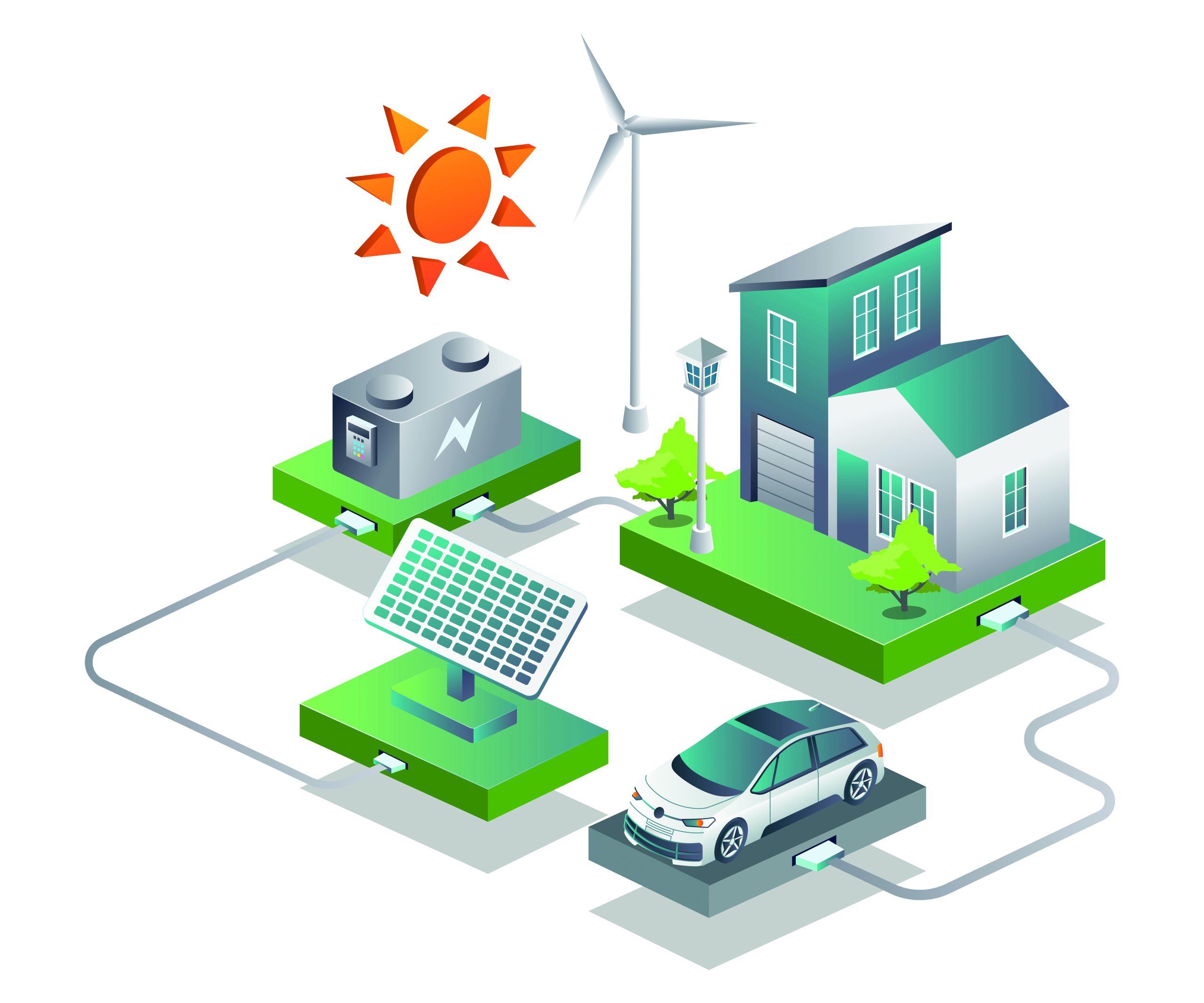 Smart home with solar panels and car charger
Smart home with solar panels and car charger
The energy transition is essentially based on the expansion of wind and solar energy. Their weaknesses are well known – they are unstable over time and geographically unfavorably distributed. Sometimes there is too little, sometimes too much electricity, and then in the wrong place. So it needs memory. And where are these currently being used to a rapidly growing extent? Correct: in e-vehicles. A two-way use of vehicle batteries through bidirectional charging can therefore be the key to the triumph of renewable energies.
The reliable coverage of the fluctuating demand for electricity at any place and at any time requires extensive measures to stabilize the grids from the electricity industry. There are plenty of technical solutions, but the investment costs for a nationwide, uninterruptible power supply are enormous. The core problem is the economically sensible and ecologically feasible storage of electricity. So far, pumped storage power plants have been the classic solution. When there is a surplus of electricity, water is pumped into basins and reservoirs located at a higher level and fed back down via turbines when there is a need for electricity. Actually ingenious, but the potential of these storage power plants in Germany has been largely exhausted.
One solution – e-cars as energy storage
The 15 million purely battery-powered vehicles, or BEVs for short, predicted by 2030 will have a total battery capacity of 700 gigawatt hours. This potentially represents a gigantic electricity storage facility that is currently only used to power the vehicles. In the future, vehicle batteries will also be able to use so-called bidirectional charging to supply their electricity for other applications. Electricity is not only charged into the car’s battery, but also taken out again when the vehicle does not need the energy for its own propulsion. If 20 percent of the vehicles are available for this alone, that corresponds to around 20 times the capacity of all pumped storage power plants in Germany. This could turn e-vehicles into decentralized swarm storage for the power grid. One wonders why this has not been practiced for a long time.
In his guest article for the current eMove360° magazine in german language, eMove360° guest author Hermann Anzinger from forum Nachhaltig Wirtschaften gets to the bottom of the following questions: What can bidirectional charging achieve? Does bi-directional charging damage the battery? What technical requirements are required for bidirectional charging? Download and read for free…